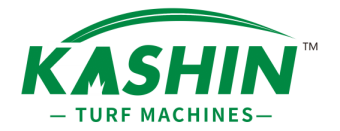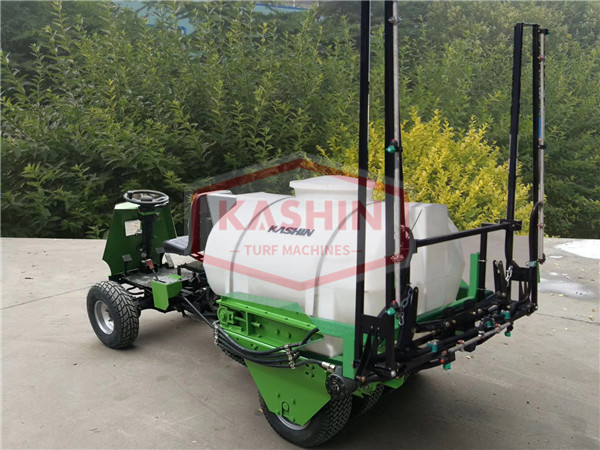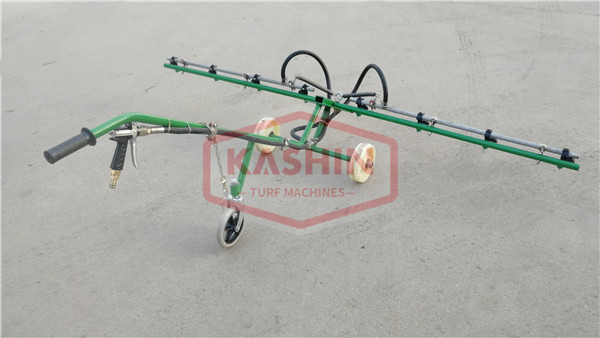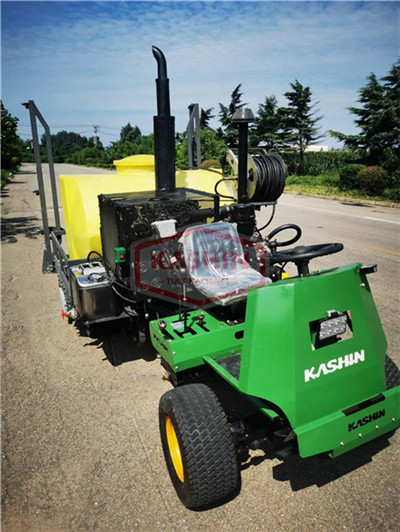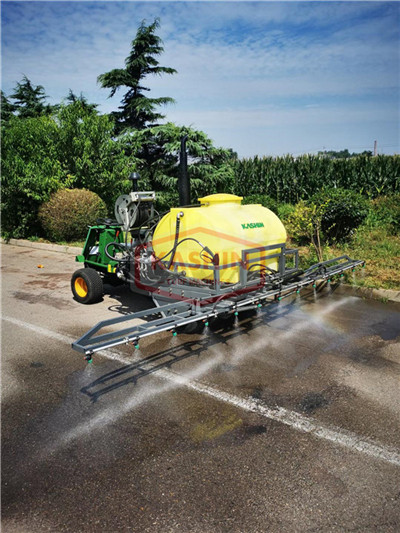Turf Sprayer Selection
Author:Ricdro
Deciding between skid units and ride-on models
When it comes to deciding between a self-propelled, ride-on or skid-type sprayer, there are a number of factors to consider, such as the type of properties you service, the ease of access to the landscapes, and—when it comes right down to it—what you’re used to. Here is a more detailed look at some of the general capabilities and advantages of each type.
Skid sprayers
offers skid sprayers in 25-, 50- and 100-gallon models. The smallest size allows operators to take advantage of the best of both worlds by splitting the difference between a skid sprayer and self-propelled unit. While it can be used as a traditional skid sprayer, “The 25-gallon has a unique hitch underneath the skid that adapts to a zero-turn mower, so it can be put on the front of zero-turn mowers,” explains Bruce , national sales manager with . That model comes standard with a 25-foot hose and spray gun. An optional boom attachment is available, as well as a “boomless nozzle,”“The boomless nozzle clips onto the front of the sprayer, and it’s like a fan sprayer that sprays down in front of the sprayer,” he says of the latter option, which provides about 12 feet of coverage side-to-side. The effect is similar to a boom, but without the boom.
The larger sprayers—the 50- and 100-gallon models—are strictly skid-mount units“We have a trailer adapter that provides a wheel kit and a trailer tongue on the 50-gallon, so you can actually trailer it behind a utility vehicle,”“Really, though, they’re designed to be put in the back of a utility vehicle.” Some customers also mount them in the back of small pickups. The units are electric and come with 50 feet of hose and a reel so the hose can be manually wound up. “Being all-electric, they’re a little unique,” Currently, the larger models are boomless only, the company expects to offer boom options later this year. So, for now, the larger models are used mainly for spot-spraying. “With the gun, it’s not really being used to go out and cover a whole 1/3-acre lawn,”
Reduced effort is one reason some contractors look at ride-on sprayers versus a skid unit, says with Company, which manufactures a full line of skid sprayers. The biggest advantage of a self-propelled sprayer “is, of course, the fact that you’re riding on it; there’s less work involved than pulling a hose around,” he says. “The problem is that when you get into residential areas and you have an average size lawn, especially if there’s trees spread out around it, by the time you simply get that piece of equipment unloaded with the ramps and get it set up and started, you could have just pulled the hose and been gone. That’s the biggest asset of skid sprayers.”
Ironically, bigger skid sprayers sometimes make the most sense for smaller yards, and smaller ride-on sprayers make the most sense for large lawns. “For the smaller, more compact yards with lots of trees, the skid-type sprayers have a lot of advantages in terms of being able to get the job done quickly. If you’re doing a big soccer field or something, then the ride-ons are the way to go.”
sprayhawks are available with a variety of hose sizes and lengths. There are also different pump volume options based on the types of chemicals being sprayed and how much agitation those chemicals require in the tank. Operators can also mix fungicides, insecticides, weed killer, etc., in a skid tank, providing greater versatility than a ride-on unit, which usually is used with just a concentrated chemical, such as weed killer.“With a skid sprayer, you can mix everything in there together, and you can vary the pump volume depending on whether you’re spraying lawn or trees.”
sprayers are usually mounted in a pickup truck, which acts as a dedicated spray vehicle. “The ride-ons have little-bitty tanks, and they deal with concentrated material. In a skid sprayer, especially one in the back of a pickup, it has 200 or 300 gallons of liquid – you’re applying 2 to 4 gallons per minute. You’re getting the chemical plus the water,”“It’s really two different kinds of spraying.” Selecting between these options often comes down to personal preference,“If you grew up pulling a hose in the lawn care business, you’re probably going to continue to do it.”
Among other manufacturers offering skid-type sprayers for lawn and landscape applications is, which has Honda-powered models ranging from 50 to 300 gallons in its V-Series lineup; and Turbo Technologies, whose hydroseed skid units offer versatile service thanks to a “Seed and Spray” option, which allows the same machine handle both tasks.
offers both walk-behind sprayers and units designed to fit on the front of zero-turn mowers or on the back of utility vehicles. What all of the models have in common, says Company Owner , is enhanced spray accuracy and operator safety, thanks to the use of spray shields. “The shields enclose the chemicals within the spray chamber, so the spray goes straight down,” he explains.
also points out that the shield offers several environmental advantages. First, in some cases the recommended spray mix includes 15 percent less chemical concentrate than herbicide manufacturers specify. And, second, because the spray is hitting the turf with greater accuracy than an open boom, the chemical is staying where it’s intended rather than blowing or drifting elsewhere. “It’s an on-target application, so we can use less chemical,” he explains. “It’s an accurate kill.” Generally, the droplet size in these sprayers is smaller, but thanks to the shields operators can choose various spray tips to vary the size of the droplet as desired.
Golf course sprayer use electric pumps and are powered off the spray vehicle (mower, utility vehicle, etc.) battery.
